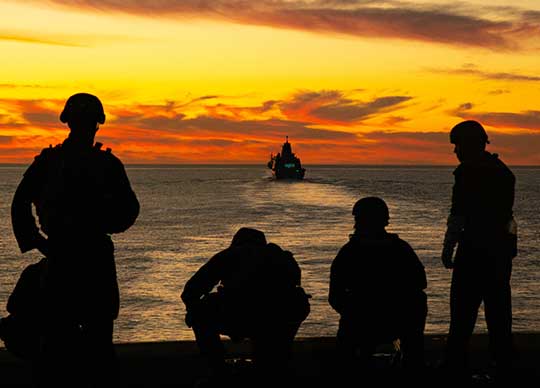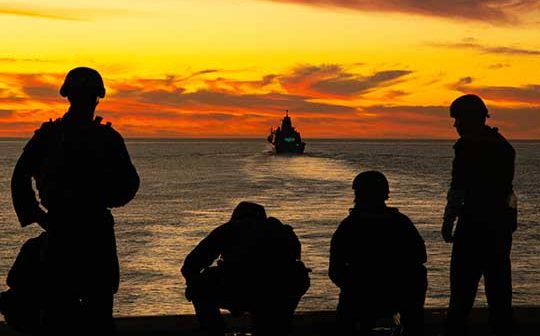

U.S. Marine Corps photo by Lance Cpl. Cameron Rowe.
Australian company Sentient Vision Systems has been selected for a Foreign Comparative Technology (FCT) test by the U.S. Department of Defense to provide ViDAR Maritime systems for integration and evaluation for the U.S. Marine Corps (USMC).
ViDAR, which stands for Visual Detection And Ranging, is an Artificial Intelligence (AI) system developed by Melbourne-based Sentient Vision Systems. It uses an Electro-Optic or Infrared (EO/IR) sensor to detect and classify targets in the imagery stream that would be invisible to a human operator or to a conventional radar, or else very hard to spot, such as a human head-size object in the water or a stealthy watercraft.
The ViDAR systems will be used for Intelligence Surveillance and Reconnaissance (ISR) missions, integrated into a medium-altitude long range unmanned aerial system operated by the USMC. It will be used to gather intelligence and enhance situational awareness during amphibious operations.
“The FCT contract recognizes that for the USA to achieve AI dominance on the battlefield may involve deep integration and cooperation with its allies who have unique resources to advance specific applications of AI,” says Sentient Vision Systems’ managing director and founder, Dr Paul Boxer. “This project supports U.S. and coalition warfighters by providing proven, trusted, advanced AI to bring enhanced accuracy and efficiency to complex and dangerous tasks.”
ViDAR uses Sentient AI, a combination of AI with the best of deep learning, to autonomously detect, geo-locate, track and classify objects in its field of view. It has a proven probability of detection of greater than 96% on first pass for small targets up to sea state 6. A ViDAR-equipped UAS or manned aircraft can provide coverage of a search area up to 300 times greater than one without ViDAR.
The FCT contract will see ViDAR integrated into airborne platforms and conduct proof of capability trials at sea, supported by specialists from Sentient Vision Systems. Successful trials are expected to lead to wider deployment within the USMC.
ViDAR has been proven in operational service as an advanced ISR and Search and Rescue tool with the U.S. Coast Guard, Royal Australian Navy (RAN), Mexican Navy, Australian Maritime Safety Authority (AMSA) and many other allied deployments. In 2021 US prime contractor Lockheed Martin announced its subsidiary Sikorsky would evaluate ViDAR as a maritime ISR enhancement aboard its MH-60R and MH-60S Seahawk helicopters, which are used by the U.S. Navy, the RAN and several other allied nations.
The Foreign Comparative Test Program comes under the U.S. Department of Defense’s Directorate of Defense Research and Engineering for Advanced Capabilities. Its purpose is to find, assess and field world-class products with a high Technology Readiness Level (TRL) in order to satisfy valid defense requirements more quickly and economically where no suitable U.S. technologies exist. Over the past 40 years, the FCT Program has led to 281 procurements by the U.S. Department of Defense worth more than US$11 billion.






